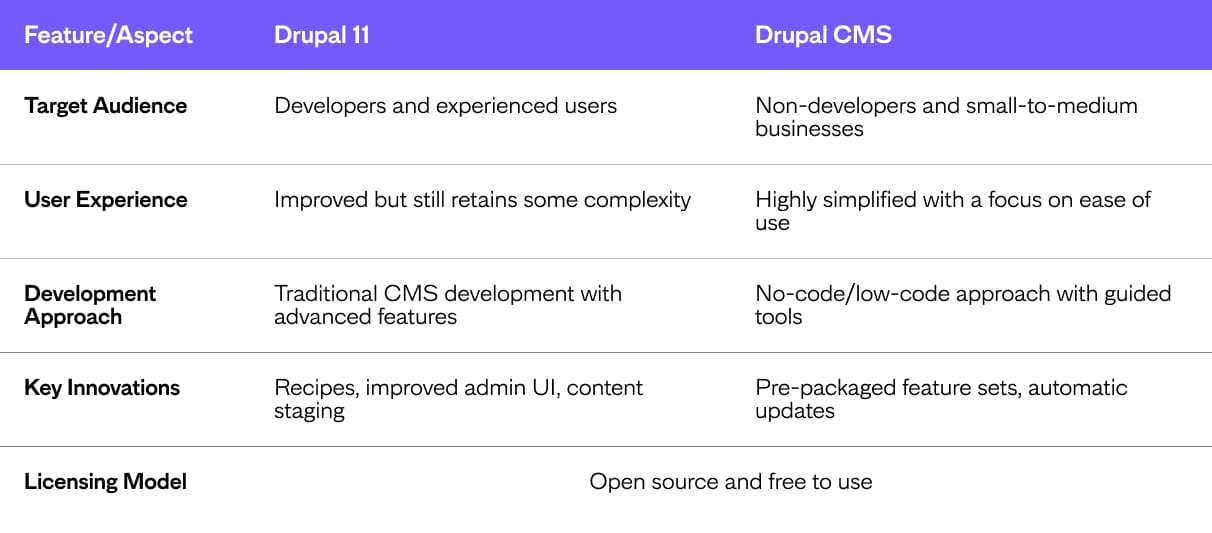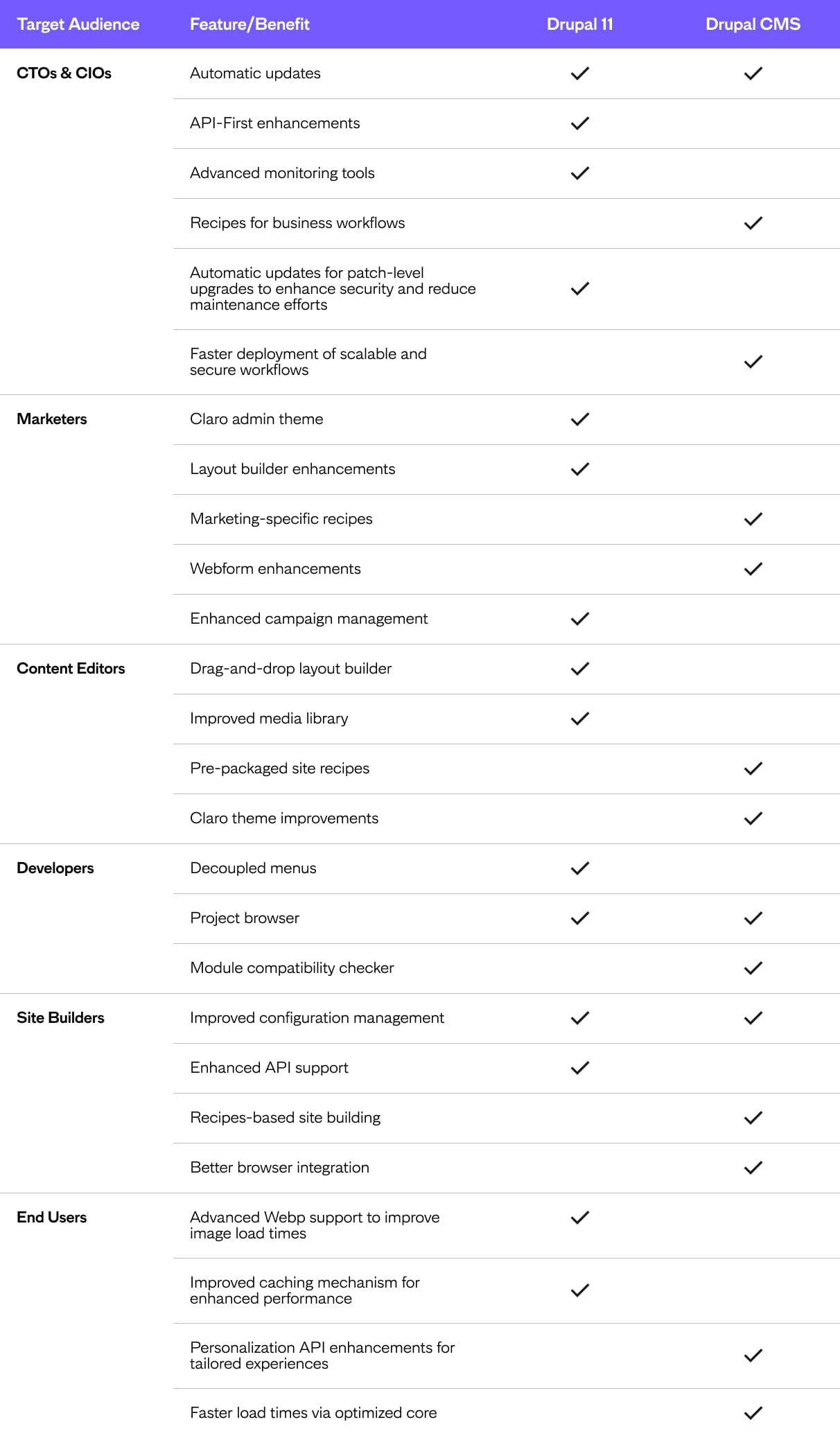Light
by Anutosh Yadav, SVP Technology at Material
With the upcoming launch of Drupal CMS, the Drupal community is filled with excitement and enthusiasm for its pre-packaged features and streamlined user experience. At the same time, core capability advancements in Drupal 11 are opening new opportunities to create innovative and scalable digital strategies. These two platforms cater to different business needs, paving the way for innovation in digital ecosystems. Let’s explore how both frameworks – with their unique but interrelated capabilities – are set to redefine digital transformation and provide value for organizations in diverse contexts.
Empowering Industries with Pre-Configured Drupal CMS
Drupal CMS is a specialized, pre-configured recipe of Drupal designed to accelerate digital transformation by providing tailored and streamlined solutions for specific industries and use cases. Unlike the standard Drupal framework, Drupal CMS offers pre-built integrations, workflows and features that reduce development time and complexity, making it ideal for businesses seeking faster time-to-market. It combines the flexibility of Drupal’s core with enhanced usability, targeting common challenges like marketing automation, analytics and multi-brand management. With its industry-focused approach, Drupal CMS empowers organizations to deliver seamless digital experiences while minimizing technical overhead, making it a practical choice for businesses with resource or timeline constraints.
Modernizing Digital Ecosystems in Drupal CMS with Drupal 11
Drupal 11 is the latest evolution of Drupal’s core CMS, focusing on modernized features that enhance performance, security and usability. Key advancements include:
-
Improved Admin UI – A redesigned, user-friendly admin interface catering to content creators and developers alike.
-
Simplified Solutions – Pre-configured sets of features and automations that make content management, site building, and workflow creation easier and more composable.
-
Enhanced Decoupled Capabilities – Improved support for headless architecture enabling seamless integration with modern front-end frameworks.
-
Automatic Updates – A focus on reducing maintenance overhead with built-in tools for keeping the CMS secure and up to date.
Drupal CMS and Drupal 11: A Complementary Pair
While Drupal 11 delivers modernized features and enhanced performance, Drupal CMS builds on this foundation to address specific industry needs and streamline the user experience. The two platforms are not designed to replace each other but to work together, offering businesses a comprehensive suite of digital tools to maximize efficiency, scalability and performance. By leveraging both platforms strategically, organizations can achieve
-
Scalability – Use Drupal 11 for large, complex projects while deploying Drupal CMS for smaller, faster implementations.
-
Collaboration – Departments can work in tandem, where development teams leverage Drupal 11 to handle backend and complex workflows while Drupal CMS enables rapid content creation and deployment.
Let’s take a deeper look at the two offerings.

Another set of criteria to consider is the ways in which Drupal 11 and Drupal CMS address the needs and preferences of key audiences, from CTOs to end users.

Meeting the Needs of Modern Digital Ecosystems with Drupal CMS and Drupal 11
With their complementary strengths, Drupal 11 and Drupal CMS address the unique demands of diverse industries, offering a powerful combination of customization, security and scalability. For example, a large enterprise could use Drupal 11 to power its main corporate site with complex workflows and extensive customizations, while deploying Drupal CMS for its marketing team to quickly launch industry-specific campaign microsites.
By recognizing the roles and strengths of Drupal 11 and Drupal CMS, organizations can maximize their digital potential. Together, these platforms form a cohesive ecosystem that drives innovation, efficiency and success. Material’s Drupal experts are here to help you navigate these options and guide you in choosing the right framework to address your unique needs and organizational goals. Reach out today to start the conversation.


